A Detailed Guide to Building Your Brand on Amazon Effectively

Your brand is what people say about you when you’re not in the room.’ – Jeff Bezos.
If you’re looking to establish your brand on Amazon, you’re on the right track.
In the vast world of e-commerce, Amazon stands tall, drawing in numerous sellers offering similar products. As competition intensifies, the old tactic of creating basic product listings and expecting sales is no longer effective.
The game has changed!
To thrive, you need a strong brand presence both on and off Amazon to capture customers and ensure sustainable growth.
A recognizable brand influences everything, from how your products are perceived to the premium prices you can command.
But, if you believe that branding is just about creating a logo on your product, you might need to reconsider.
This article will delve into the impact of building a brand on Amazon on the company’s success and highlight some crucial tactics.
Here is a quick peek into the article:
Why Building a Brand on Amazon is Need of the Hour?
The abundance of the internet has transformed the e-commerce market into a vast arena where everyone can be a seller.
However, in this increasingly competitive landscape, being just another seller on Amazon is not enough to stand out and thrive.
You need to create a unique brand identity that automatically stands apart from the competition.
That’s where building a brand comes in.
A brand serves as the driving force that motivates customers to purchase from you.
And it all starts with creating a mission statement for your brand. Think of it as the holy grail for your brand, a guiding principle that shapes all your communications and messaging across various platforms.
For example, if you sell an outdoor running shoe product, your mission statement could be something like:
“Creating footwear that reignites the love for running outdoors fueled by innovation and performance. ”
With this mission statement, you can create product photography and branded videos which focuses on outdoor imagery.
This mission statement prevents you from making wrong branding choices that don’t align well with your target audience and ensures consistency and authenticity.
Building a strong brand on Amazon offers numerous benefits, some of which include:
Builds Customer Loyalty
Building a brand on Amazon lets you create a loyal customer base. A loyal customer base leads to repeat purchases and word-of-mouth marketing, significantly reducing the marketing cost.
A loyal customer base is also valuable during the holiday season and new product launches, as they can hype up your product and build awareness with user-generated content without spending a dime.
Out-Brand Your Competition
A strong brand presence on Amazon allows you to outperform your competition and maintain the top SERP ranking.
Go to Amazon today and search for a product in any category. You can see that the top five successful products have beautiful and clear brand photographs and compelling product listings.
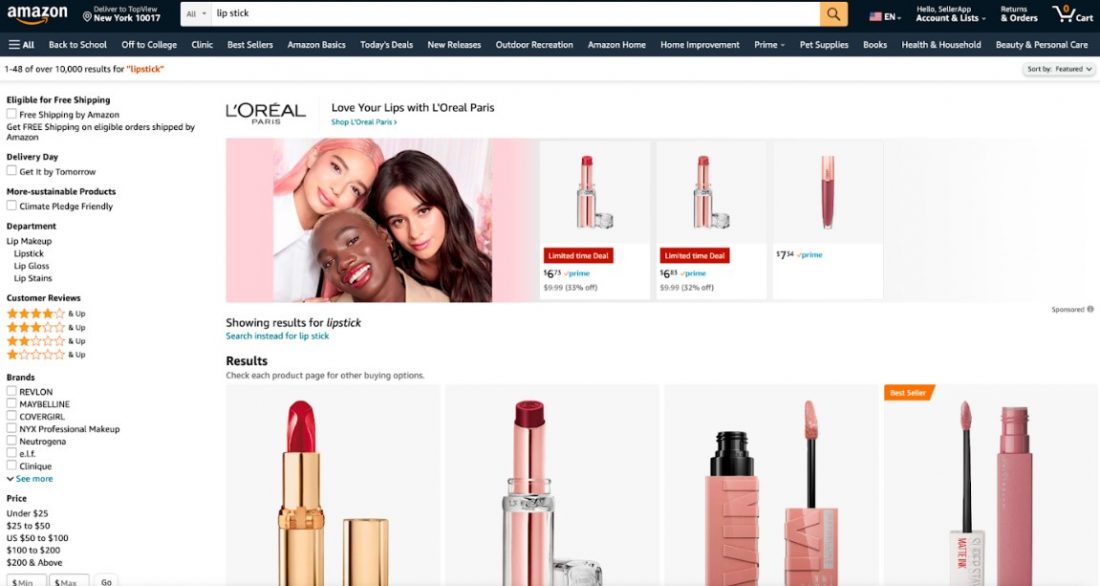
Similar to them, If you develop consistent branding on Amazon, it would be easier for you to rank higher on Amazon compared to the generic brands.
Increase Brand Searches
As your brand gains recognition and loyalty, a snowball effect starts to happen, where customers search for your brand rather than a generic keyword.
For example, instead of searching for soft drinks, people search “Coca-Cola.” That’s the power of brand searches.
This indicates the strong reputation and trust you’ve built with customers. It also comes with high customer loyalty and reduced customer acquisition costs.
Related Product Purchases
This is an extension of the previous point. A well-established brand leads to increased cross-selling opportunities.
When customers trust and identify with your brand, they are more likely to purchase related products from you.
For example, customers who buy a computer mouse from your brand are more likely to buy high-end mouse pads from the same brand. It increases the average order value and generates more revenue for your brand.
Charge Premium
Brands like Apple typically cost higher than the competition. There’s more to its pricing than meets the eye. They have positioned themselves in such a way that consumers are convinced about the pricing of their product.
You could try this strategy yourself. Competing with low-priced sellers is the road to hell.
Instead, focus on building a strong brand that screams premium – and you can charge higher prices and generate higher margins compared to your counterparts.
Do keep in mind this is not a strategy you could try as soon as you launch your brand. You need to build trust with your audience before you get to this stage.
How to Build a Brand on Amazon
Now that you know why brand building on Amazon is important, let’s get into the details of how to create your own brand on Amazon.
Here’s a step-by-step guide to creating a brand on Amazon:
Find the perfect product to sell
Your brand is ultimately going to be perceived by customers on the products you sell.
So, before investing in branding tactics, focus on finding a high-quality, profitable product with high growth potential.
To begin, here are some of the requirements that SellerApp experts follow to select the right product to sell:
- Small and lightweight: The product should fit into a small, flat-rate box (8 11/16″ x 5 7/16″ x 1 3/4″) and weigh no more than one or two pounds.
- Non-seasonal: The product should have year-round demand to avoid accumulating dead inventory.
- Unregulated products: The product shouldn’t be in the difficult-to-get-approval-for categories, such as foods, toys, baby products, batteries, etc.
- Uncomplicated products: Choose products with fewer complications, avoiding complexities like extensive customer service or sourcing multiple variations.
- Moderate price range: The product should be priced between $20 and $50.
- Minimum monthly sales: at least 300 to ensure sufficient sales velocity
- Ratings: Identify products with low ratings (< 4 stars) to ensure room for product improvement.
- Competitive analysis: Analyze the top ten products in the niche and ensure they have fewer than 500 reviews. It ensures that the category is untapped.
- Listing quality score: Examine some of the competitors’ listings, and see if they have a low listing quality score. It indicates a low barrier to market entry and opportunities for product improvement.
Use SellerApp’s Listing Quality Checker tool to check the listing quality of any product on Amazon quickly.
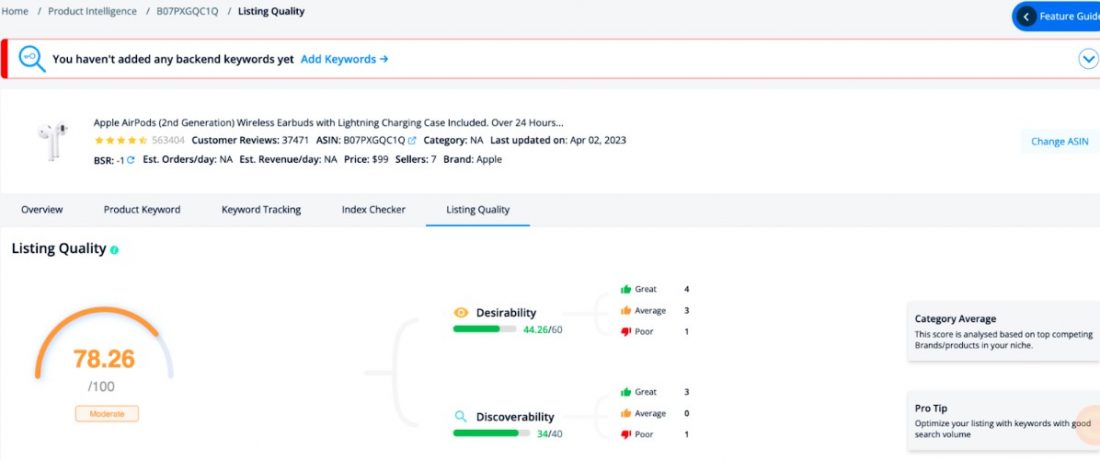
Research your target audience and competitive landscape
Understanding your target audience and competitors is a must to create your branding on Amazon.
If you skip this step, you risk going into the untested water and end up becoming just another brand on Amazon.
Here are one important questions you can ask yourself to understand the audience and your unique voice:
Who are your customers?
Try to understand your target audience. It’s easy to think that “my product appeals to everybody.” But more often than not, e-commerce brands find success selling to a niche audience.
For example, let’s say you sell natural, organic skincare solutions for aging and dryness.
This product primarily targets women aged 25 to 45 years old. This age group is more conscious about skincare. And they are willing to invest in high-quality organic products that promote a radiant and youthful complexion.
With this information in mind, you can create a message that appeals to women in the above age group. Also, mention the brand’s commitment to using organic and sustainable products. Provide information on their ingredient source, cruelty-free certifications, and eco-friendly packaging to build trust with environmentally conscious consumers.
Additional guide: What are Amazon Ads Certifications?
Create the Brand Messaging
When we hear the word “brand,” we usually link it to how the product is designed. But in reality, a significant portion of the work revolves around creating the perfect brand messaging.
Brand messaging plays a significant role in showcasing your competitive advantage to the shoppers in a way that resonates with them.
Let’s understand brand messaging from this simple branding framework that you can easily apply to your business:
- Product attributes: Find some standout factors that make your products distinct from competitors. It could be the materials you use in production, innovative tech, to specific features that competitors lack.
- Product benefits: These are the practical value propositions your product offer to the customers. How do your products solve your customers’ problems?
- Emotional benefits: It involves crafting a compelling story that connects with your customers and makes them feel good about their purchase.
- The zing: This is the core message that ties together both the product benefits and emotional aspects. Think about how you can leave a lasting impression on your customers beyond the product benefits.
Now let’s reverse engineer a footwear brand, “Saucony,” to understand how this branding framework work for them.
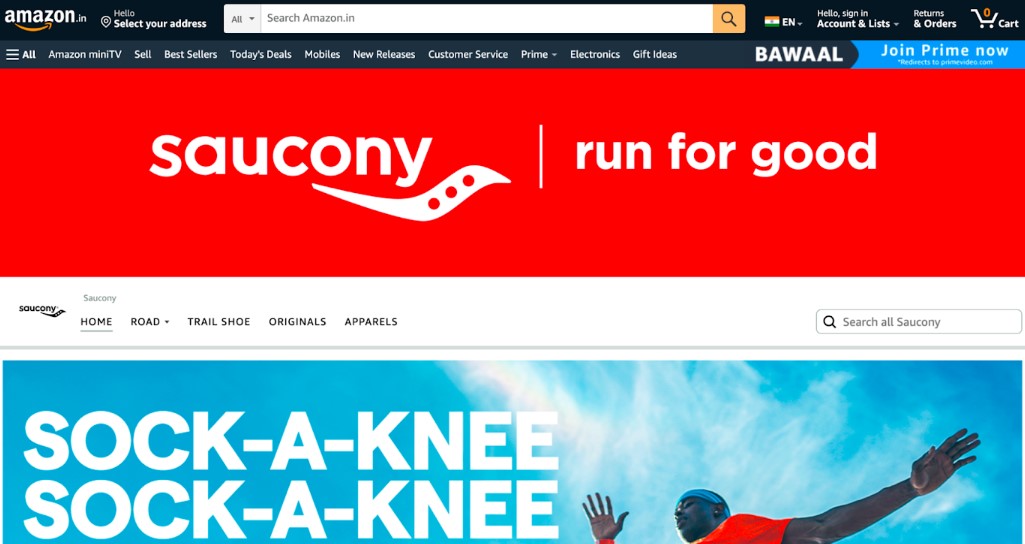
- Product attributes: Emphasis on performance, snug fit, shock absorptions, and comfort for long-distance
- Product benefits: Durable, high-performance, protection from impact
- Emotional benefits: Feeling of empowerment, confidence, and a sense of community
- The zing: Active and healthy lifestyle, feeling youthful
When you create a brand messaging that successfully connects the dots between your product’s features and the benefits it offers to your customers, then you’ll know you’ve hit the nail on the head.
Invest in packaging
An often overlooked aspect of selling on Amazon is the customer experience during unboxing.
As a brand, you have the opportunity to trigger a positive emotional response from your customers right from the moment they receive and open your product.
Think about it – that feeling of anticipation and excitement when their long-awaited purchase finally arrives. It’s exhilarating!
But if their product arrives in a plain, mundane box with nothing else to offer, you’re missing out on this golden opportunity.
So, invest your time in creating well-thought-out product packaging that leaves a lasting impression on the customers’ minds.
Get A Trademark
To sell your products under a brand, you should have an active registered trademark in all countries you want to sell in.
If you’re a US-based brand, apply for a trademark from the United States Patent and Trademark Office. The entire process usually takes a few months.
And if you don’t want to wait, Amazon provides the IP Accelerator program. Here you can connect with an Amazon-partnered IP attorney, file for a trademark, and get your products approved into the Amazon Brand Registry with a pending trademark registration.
Register with Amazon Brand Registry
Once you have the trademark, you’re all set to get your brand registered with the Amazon brand registry.
The process is simple.
Step 1: Create a Brand Registry Account
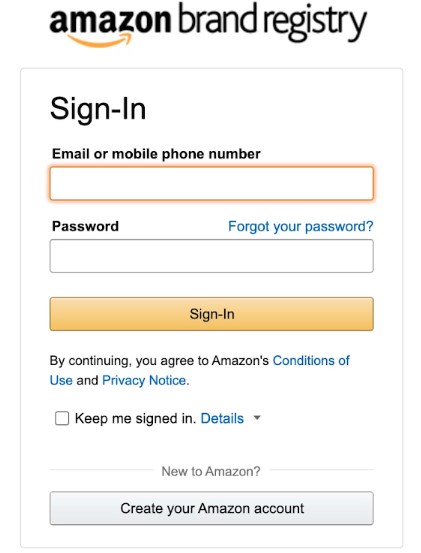
To begin with, ensure that you already have an active Amazon Seller Central or Vendor Central account. Once you have it in place, head over to the official Brand Registry Portal and sign up.
Step 2: Enroll Your Brand
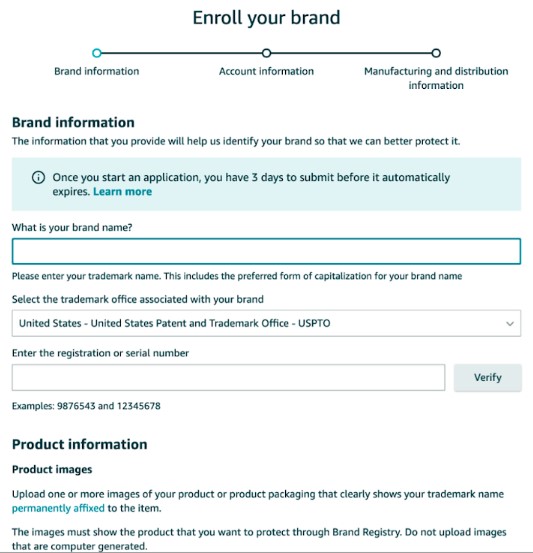
From the Brand Registry dashboard, proceed to enroll your brand.
Fill in the required fields with details about your brand, including the country of origin, manufacturing information, GTINs, UPCs, or EANs.
Then, click on “Submit” to initiate the enrollment process.
Step 3: Verification from Amazon
After submitting your application, Amazon takes approximately 2 to 10 days to verify all the provided information and activate your brand registry account.
Amazon then sends a special code to your registered trademark office, which will be forwarded to you. Once you give the code to Amazon, your Brand Registry account will be activated within 1-2 working days.
Learn more about it from the Seller Guide to Brand Registry.
Create Product Listings that Convert
Now that you’ve checked off all the necessary prerequisites to create a brand on Amazon, it’s time to dive into creating a compelling product listing that brings sales to your brand.
Here’s a step-by-step process to do that:
Step 1: Conduct Keyword research
Compile a comprehensive list of relevant keywords potential customers search to find your product on Amazon.
Use SellerApp’s Keyword Research and Reverse ASIN tool to identify high-performing keywords.
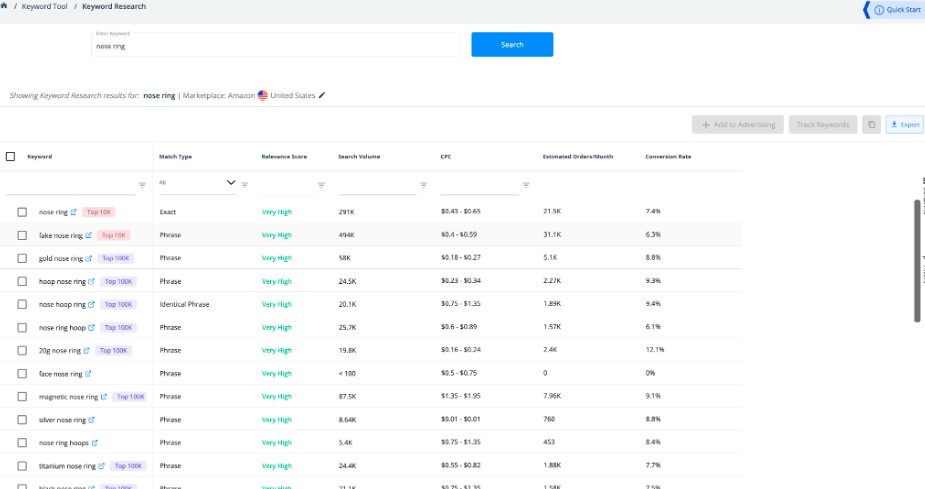
Target short-tail high-volume keywords to enhance brand visibility and long-tail keywords to get a higher conversion rate.
Step 2: Optimize Product Listing
Once the keyword research is complete, create and optimize the product listing on Amazon seller central for maximum visibility and sales.
This step is crucial to ensure your product stands out among the sea of competition and attracts potential buyers.
Optimize the Product Title
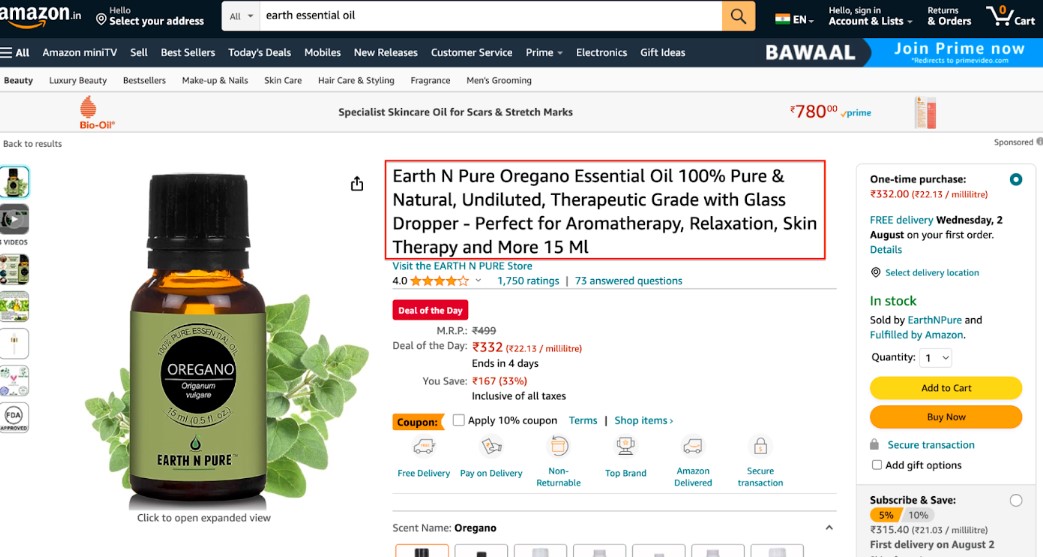
The product title serves as the first point of contact with the shoppers, making it a key element in your listing’s success.
Incorporate 2-3 highly volume keywords in the title to enhance discoverability.
However, avoid stuffing the title with unrelated keywords to maintain clarity and readability.
Finally, include the brand name and showcase the product’s unique selling point in the title to build brand recognition and increase CTR.
Add Bullet Points
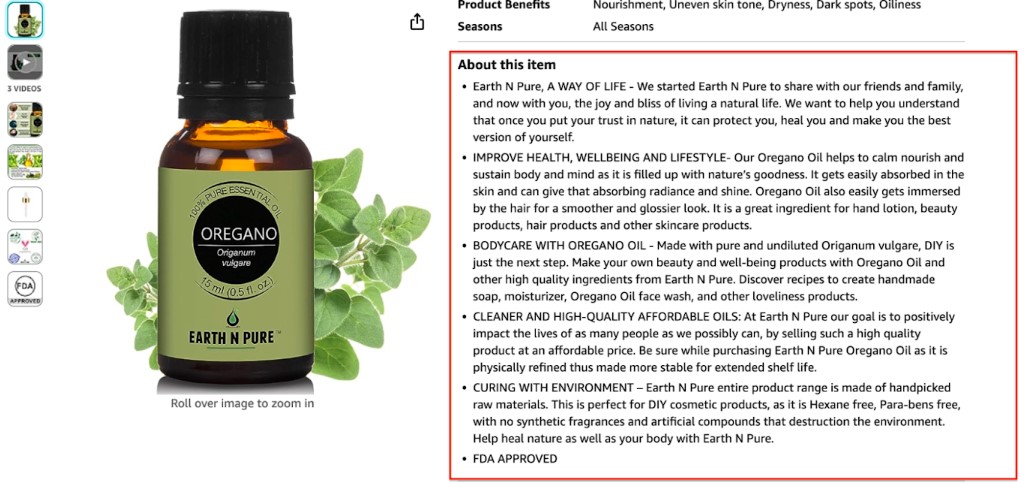
The bullet points convey your product’s main features and benefits to the shoppers. Amazon allows brand-registered sellers to add up to five bullet points.
On the top three points, emphasize the unique selling points that set your product apart from the competition.
Use the fourth bullet point to include product information, such as dimensions, materials, or additional benefits, if applicable.
On the fifth point, highlight any special offers, warranties, or guarantees you offer to entice potential buyers to make a purchase.
Optimize Product Description
Use the product description section to provide additional details that couldn’t fit in the bullet points.
Brand-registered sellers also have the opportunity to add A+ content to the product description to make it more engaging to the shoppers.
It increases conversion rates and boosts sales by providing a better understanding of the product.
It also presents an excellent opportunity for sellers to showcase their brand messaging to shoppers and differentiate their products from similar offerings by competitors.
For example, an essential oil brand, “Edens Garden,” showcases its values on the A+ content: women empowerment, charitable initiatives, and commitment to organic, natural, and chemical-free products.
This fosters trust, boosts brand loyalty, and sets them apart from competitors.
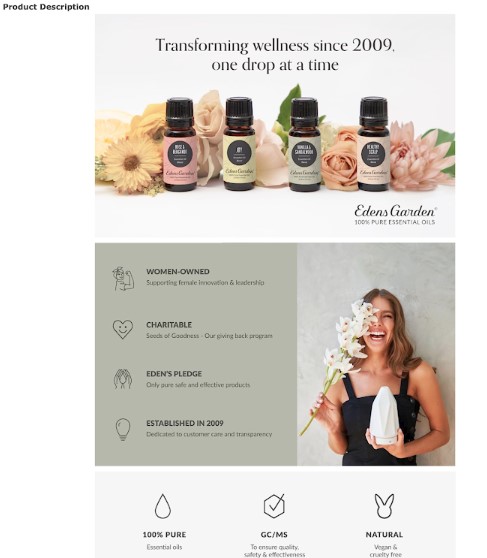
Learn more about it from the detailed A+ content Guide.
Leverage Backend Keywords
Backend keywords are a hidden gem in Amazon listing optimization.
These are additional keywords that are not visible to customers but are indexed by Amazon’s search algorithm.
Amazon allows brands to add 250 bytes of characters in the backend keywords. So, use this space wisely to include relevant keywords that couldn’t be incorporated into the listing.
Add High-Quality Product Images
Images are the visual gateway to your product.
Most shoppers click on the listing just by seeing the product image. So, ensure your product images are clear, high-quality, and represent your product accurately.
If photography is not your jam, hire a professional photographer who can help you present your products in the best possible way.
Learn the Amazon product photography guideline before creating the product images.
Creating and optimizing the product listing with appropriate content and keywords significantly improves the listing’s search rankings and enhances its appeal to potential buyers.
Create an Amazon Storefront
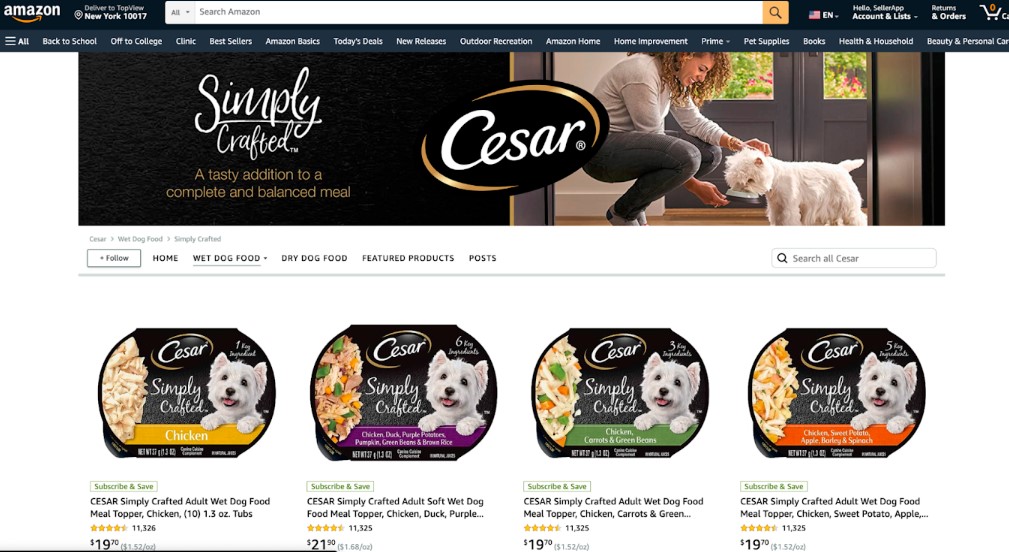
Think about an Amazon storefront as a curated space where your brand takes center stage, and customers can seamlessly explore your entire product lineup while understanding your brand story and values.
Previously, only Amazon Vendors had access to Stores, but now, brand-registered sellers can create an Amazon storefront and enjoy all the benefits.
Here are some of the remarkable benefits you get with Amazon Storefront:
Immersive Brand Experience
Amazon Storefront provides an immersive brand experience to shoppers with a comprehensive view of your product lineup. Gone are the days of customers searching for individual products on Amazon. Now, Amazon brand-registered sellers can easily create a brand storefront to showcase all products in one place and improve the customer experience.
A Distraction-Free Environment
Unlike the Amazon SERP, where competitors fight for attention, your Storefront is an ad-free zone dedicated solely to your brand.
This undivided focus allows customers to explore your brand without any external distractions, reinforcing brand loyalty.
Flex Your Creative Muscles
Amazon Storefronts offer you the creative freedom to design your storefront with enticing branded content like images, infographics, videos, etc.
These elements combine to build a compelling brand narrative that resonates with the target audience.
Generate Direct Traffic and Sales
By combining your Amazon storefront with Sponsored Brand and Display ads, you can direct traffic directly to your Amazon Storefront.
This allows you to steer shoppers away from your competitors’ products and channel them toward your brand’s offerings – potentially building brand awareness and improving the conversion rate.
Focus on Getting Quality Ratings and Reviews
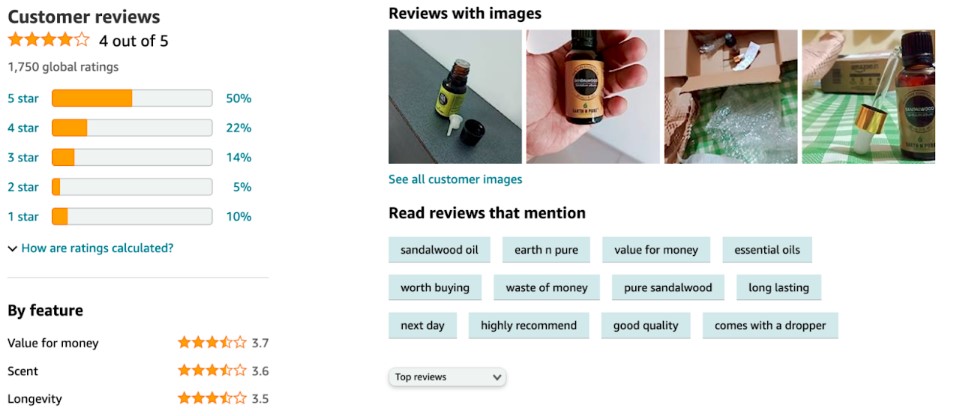
54.4% of Amazon customers say they read at least four reviews before making a purchase.
Not just that! Good ratings and reviews also help your product rank high on the Amazon SERP.
Therefore, focus on getting more ratings and reviews for your product to build a positive brand image.
However, follow the Amazon guidelines strictly when getting reviews. Any malpractices will lead to your account getting banned.
Use Amazon’s early reviewer program and Vine program to get more reviews.
Embrace Full-Funnel Marketing
While Amazon is undeniably the best platform for sellers to build a brand, relying solely on it may limit your brand’s long-term growth potential.
Instead, adopt a full-funnel strategy using Amazon DSP and Sponsored Display ads and simultaneously grow your brand on and off Amazon.
Here are some benefits of using a full-funnel marketing strategy:
Nurture Brand Loyalty And Build Brand Equity
When your brand engages with shoppers outside of Amazon, it gives them an opportunity to build better brand equity and create a loyal customer base that stays connected with your brand for a long time.
The data speaks for itself, as brands utilizing a comprehensive full-funnel strategy experience a remarkable 190% surge in ad-attributed product Subscribe & Save.
Generate Better Sales
A full-funnel strategy also helps you generate more sales for your brand.
According to Amazon, sellers who embrace a full-funnel advertising strategy experience a remarkable 21% increase in new-to-brand sales compared to those solely relying on Sponsored Products or Sponsored Brand ads.
Not stopping there, brands that use full-funnel strategies witness an impressive 8% month-on-month boost in sales compared to their counterparts.
Increase Brand Consideration
A full-funnel approach also helps you improve consideration and drive more sales.
For example, you can show Sponsored Display ads to shoppers who have visited your listing before and reengage them to increase consideration.
You can also use a look-alike audience to reach shoppers browsing products in a specific category and drive them to your product listing or brand storefront.
This helps you spread brand awareness and increase consideration for your products.
Build an Audience Outside of Amazon
Another way to build a brand is through social media. It’s the most cost-effective marketing channel and has the best return on investment.
Check out this guide to know about Amazon return pallets.
In fact, studies have shown that 76% of consumers purchase products they see in a brand’s social media posts.
Partnering with micro-influencers on social media also provides a great level of awareness and engagement to a brand.
You can find 2-3 micro-influencers in your category and ask them to review your product on their social media channels.
Related Post: Why are reviews important for your business?
It doesn’t require a lot of effort or money, but you can get a good amount of targeted traffic directed toward your brand with this kind of activity.
Final Thoughts
In conclusion, creating a successful brand on Amazon requires a unique and strategic approach.
Here are a few tips to remember:
- Find the right product to sell on Amazon. Consider factors like size, weight, demand, and competition.
- Conduct thorough target audience and competitor research to understand your niche and unique selling points.
- Create strong brand messaging that highlights product attributes, benefits, emotional appeal, and a memorable core message.
- Invest in product packaging to enhance the unboxing experience and create a positive emotional connection with customers.
- Register with Amazon Brand Registry for advanced branding features.
- Create compelling product listings by conducting keyword research, optimizing titles, bullet points, and descriptions, and leveraging backend keywords.
- Build an Amazon Storefront to provide an immersive brand experience to shoppers.
- Get quality ratings and reviews to build a positive brand image and boost product rankings on Amazon.
- Embrace a full-funnel marketing strategy, using Amazon DSP, Sponsored Display ads to nurture brand loyalty and increase sales.
- Utilize social media and collaborate with micro-influencers to spread brand awareness and drive targeted traffic to your brand.
Now you know everything about creating your brand on Amazon and understand it’s a long-term process.
But remember, you don’t have to do it alone!
SellerApp is here to support you on your brand-building journey and power your full-funnel marketing growth. Our team of e-commerce experts and powerful AI tools have helped thousands of brands achieve significant growth and success on Amazon.
Join our community of small e-commerce business owners and sellers to learn and grow together.
Take action now and start building your brand on Amazon with SellerApp’s guidance and expertise. Your brand’s success awaits!
Additional read:
Can you transfer an Amazon seller account?
Differences between Amazon Sponsored Display Ads vs DSP Ads


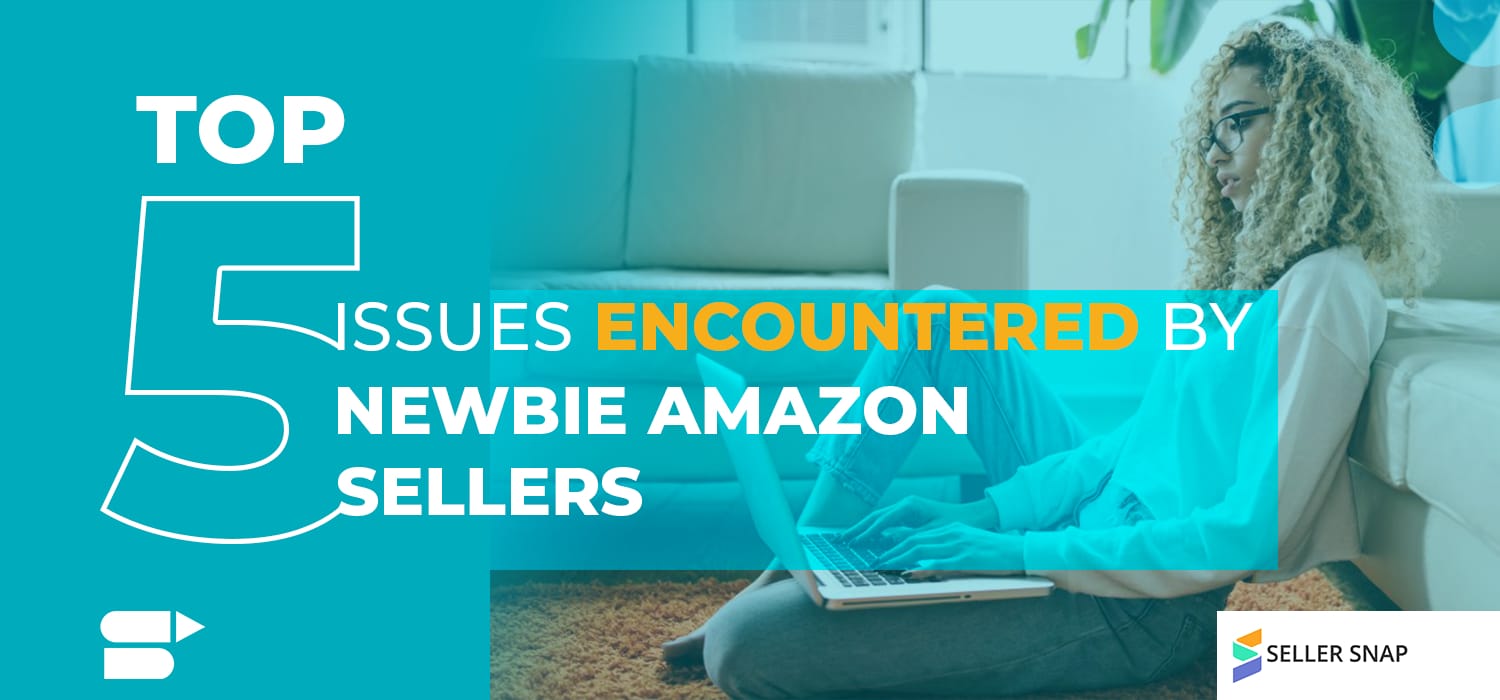
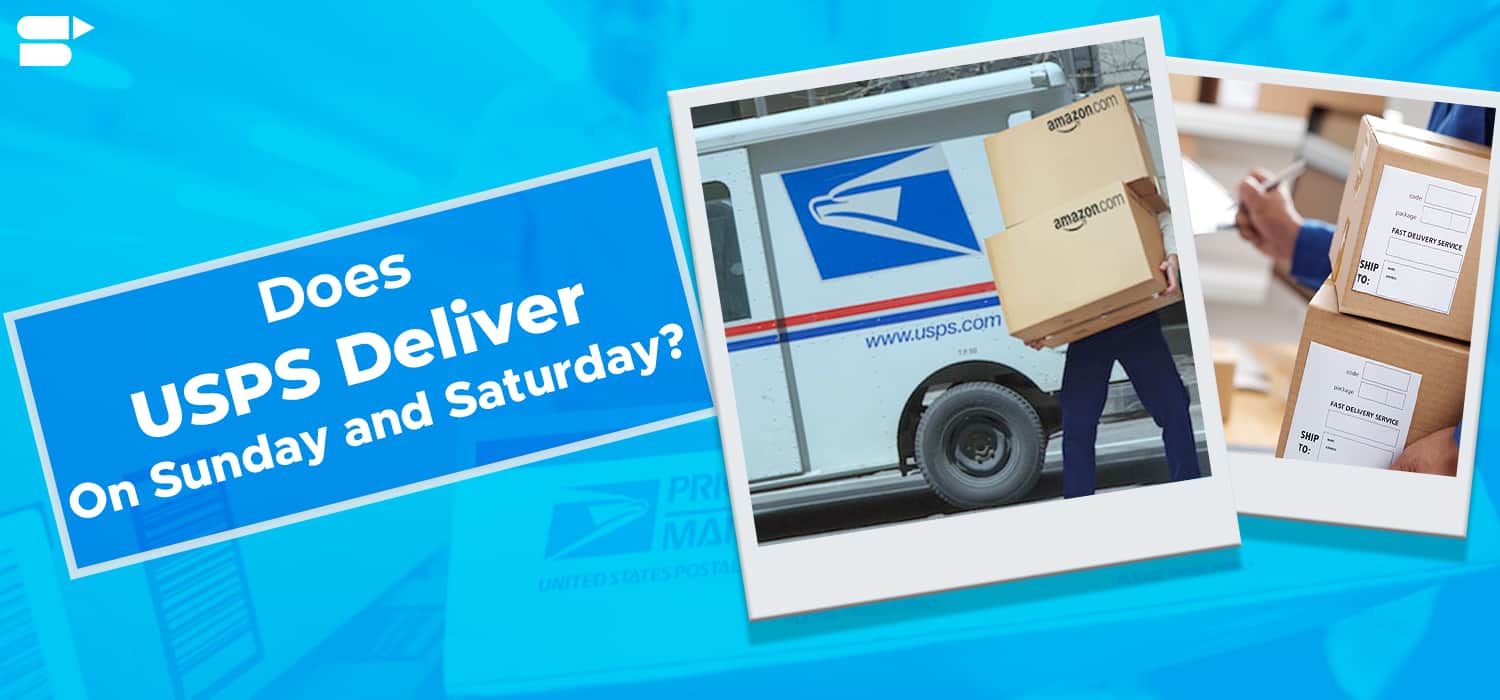
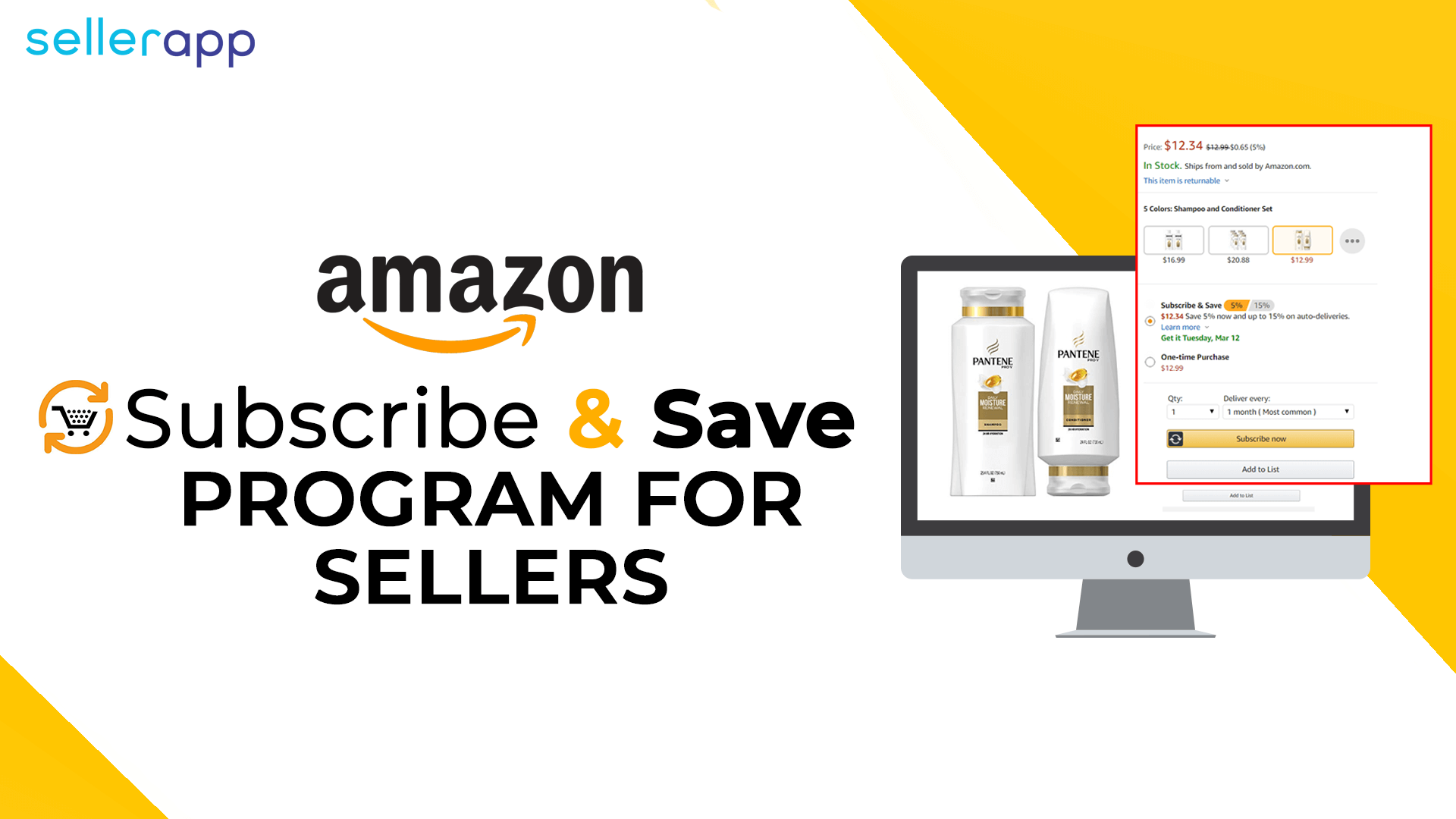
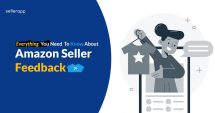
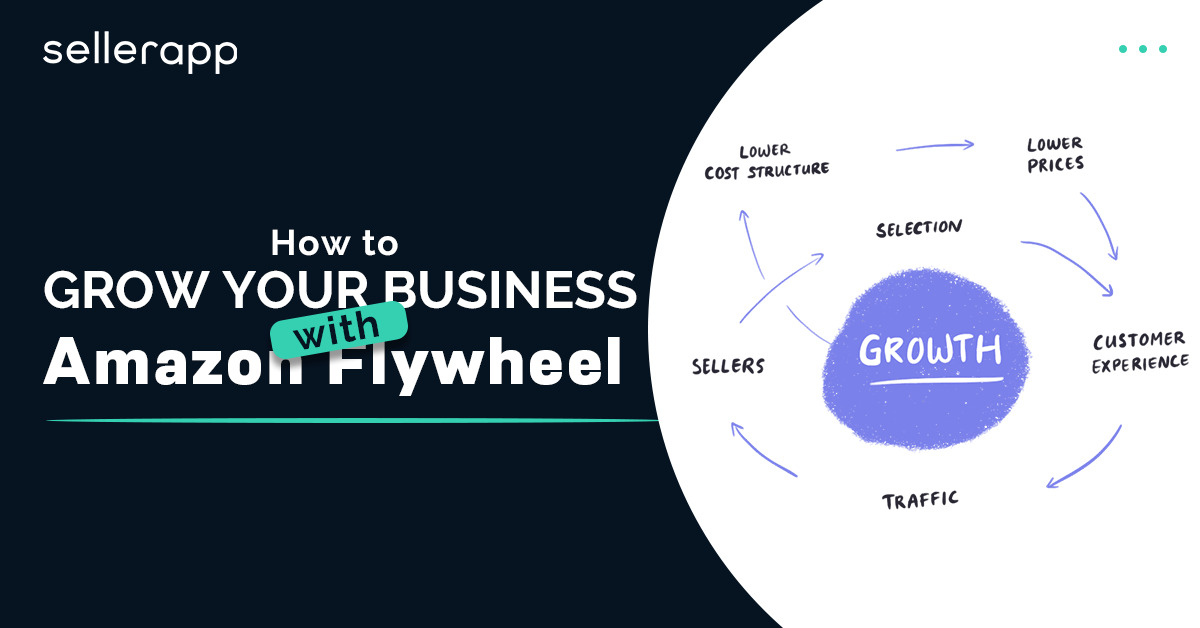
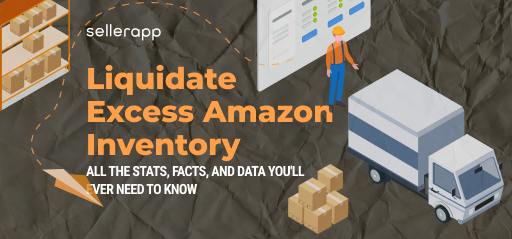
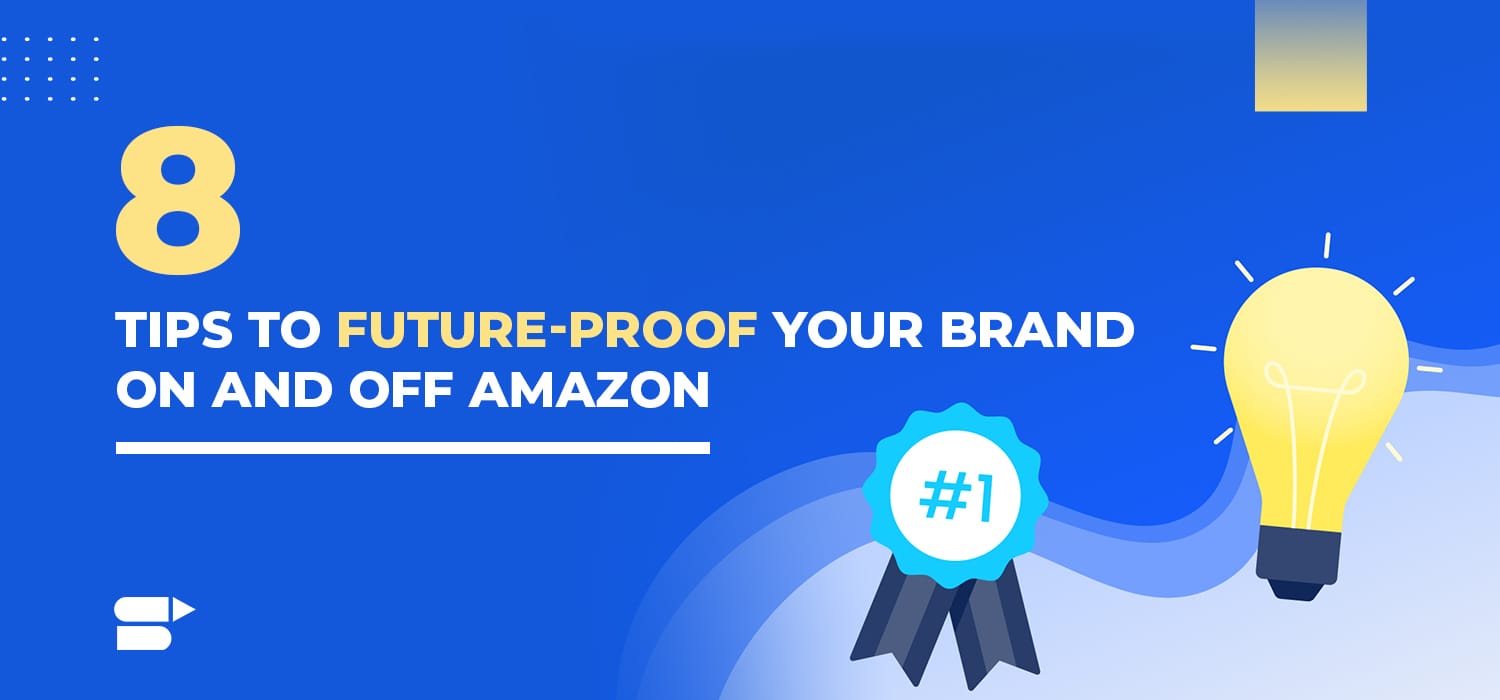
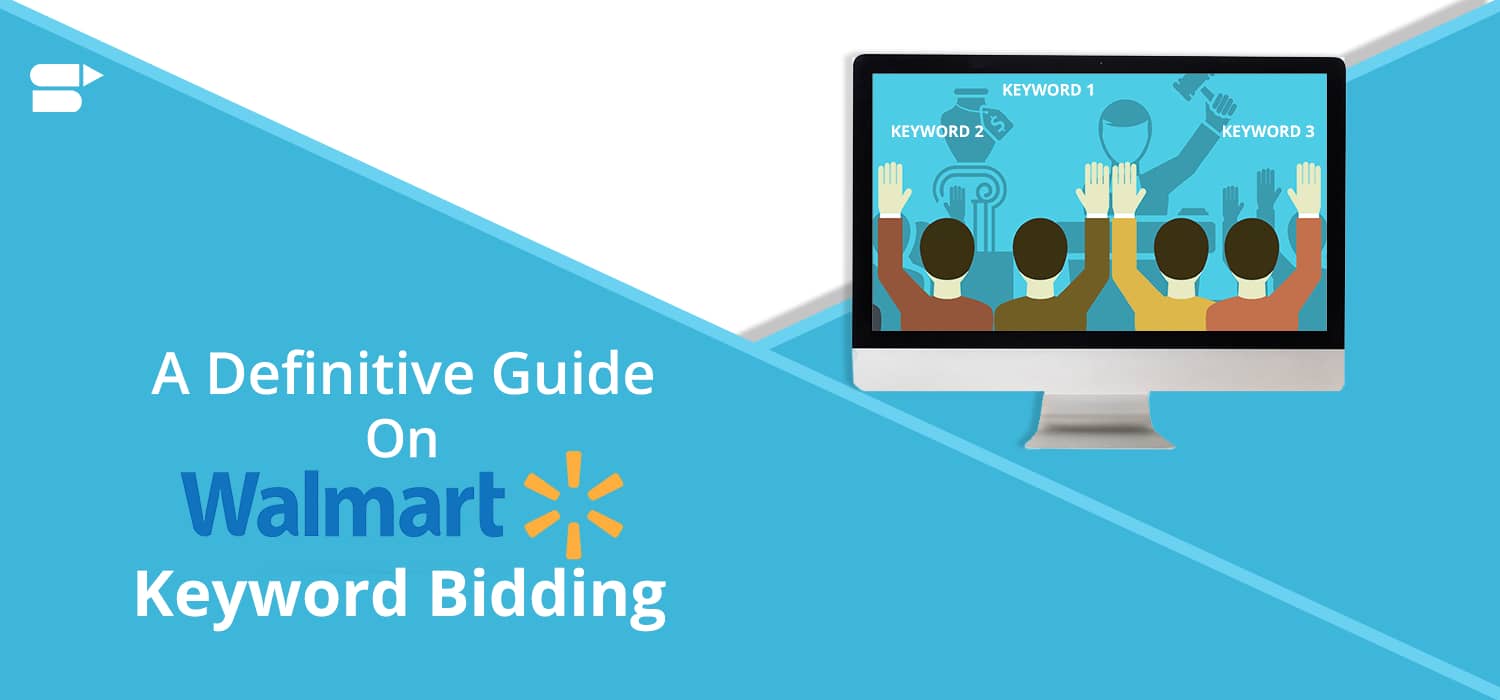
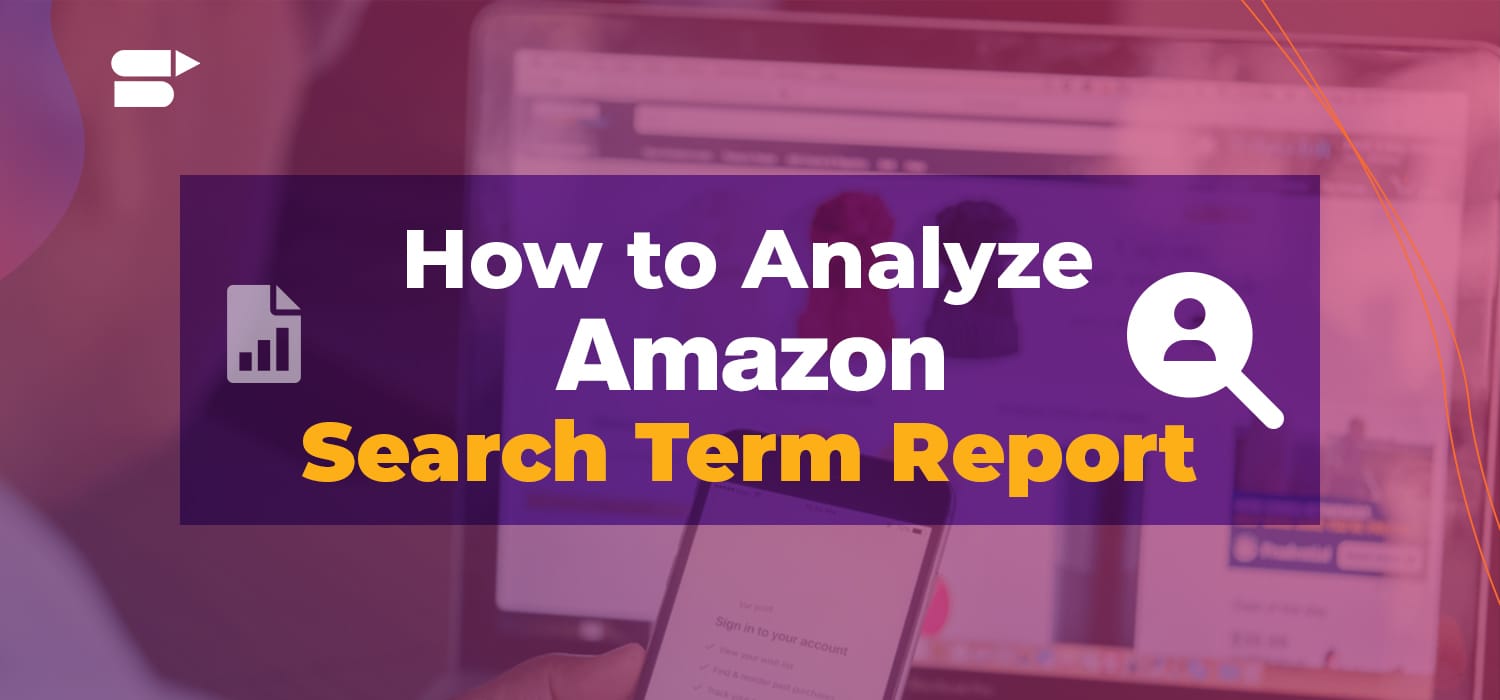
Sheldon
August 31, 2023Great tips! Excited to implement these strategies and elevate my brand on Amazon.
Clare Thomas
March 13, 2024Glad you found the tips helpful
Brittany Louis
September 13, 2023You make the complex seem so simple. Brilliant work!
Clare Thomas
March 13, 2024Thank you.
Billy Stanlake
October 29, 2023Incredible read! Ready to take my brand to new heights on Amazon. Thanks for the insights
Clare Thomas
March 13, 2024Very happy to hear that.
Harold Grey
November 13, 2023Fantastic guide! Excited to boost my brand on Amazon using these tips!
Clare Thomas
March 13, 2024Glad you found the guide helpful.